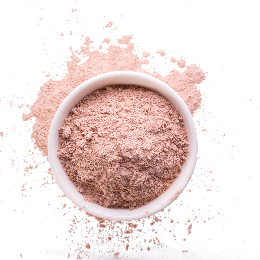TLDR: Tryptophan, GABA, saffron, Magnesium, and MSM are five substances that I use to support my cerebral health.
- Tryptophan is an amino acid that is used to form serotonin.
- GABA is an inhibitory neurotransmitter that gets used up by drinking booze.
- Saffron is a potential SSRI alternative.
- Magnesium helps the mitochondria generate ATP, the “cellular currency”.
- MSM may help protect the brain from oxidative stress caused by ethanol (alcohol)
Table of Contents

Brains these days are tired
Information overload. Shift work. Drug and alcohol use. An aging population. Social isolation. Processed foods. Phew. That’s enough to make anyone tired.
The brain is very, very busy
The “encephalon” is the body’s biggest glucose hog. Neurones in all areas of the noggin are constantly signalling to one another. There is a huge, constant load on the nervous system just to keep us alive. It is busy even when we are relaxed!
Quite apart from all the background work, the cerebrum is constantly managing the active work of both the mind and the body. Thinking, sensing, creating, exercising, working, playing, driving, even making decisions about what to buy at the grocery store: all of this and much, much more is managed by this one amazing organ.
And so, it seems only right to learn a little about how it works. It seems only right, furthermore, to support its health as much possible, so it serves us for as long as possible. I studied Chemistry and Biology at Undergraduate level, and Neuromusic at Masters level. I hope that my explanations are accessible and accurate.
Disclaimer
This is not intended as medical advice. I am offering some information from a balanced and scientific viewpoint. However, I am not a doctor. Consult your healthcare practitioner before making any changes to your diet or supplementation.
Remember: there is a difference between healing and curing. Keep that in mind when reading about anything health-related.
Biology Background
Before we get started on my boosters, let’s get some basics under our belts.
Neurones, neurotransmitters and synapses
Neurones communicate with each other by releasing and absorbing chemicals called neurotransmitters. Most people have heard of Dopamine and Serotonin. What these molecules actually do is cross the tiny little spaces, called synapses, between the end of one neurone and the beginning of another.
How long they stay in the “synaptic space” depends on the person. The famous SSRI class of drugs (prozac and its ilk) are drugs that make serotonin stay longer in the synaptic space. Ritalin, used for ADHD and hyperactivity, also sits in the synaptic space and stimulates the neurones, keeping them “entertained” and helping the person avoid seeking outside stimulus.
Of my supplement routine, GABA, Tryptophan, and saffron are there to support neurotransmitter production in my body. I will elaborate more on this in a later post.
Table 1: Neurotransmitters in the Human Brain
This list is not exhaustive, but here are some important neurotransmitters:
| Dopamine | GABA | Histamine |
| Serotonin | Glutamate | Glycine |
| Oxytocin | Epinephrine | Purines |
| Acetylcholine | Norepinephrine |
Brainwaves and bio-electricity
Neural activity is bio-electrical in nature. Using specialised equipment, nerve oscillations can be measured and visualised. Brainwaves can oscillate between 0.5-80 times per second. The frequency at which they oscillate is written as “Hz” (Hertz).
Table 2: Brainwave Frequencies
| Frequency band | Frequency | States |
| Gamma (γ) | above 35 Hz | Concentration; Flow state |
| Beta (β) | 12–35 Hz | Anxiety dominant, active, external attention. |
| Alpha (α) | 8–12 Hz | Very relaxed, passive attention |
| Theta (θ) | 4–8 Hz | Deeply relaxed, inward focused |
| Delta (δ) | 0.5–4 Hz | Sleep |
Magnesium and the energy needs of the neurones
The cerebrum is the body’s biggest user of glucose. All that bioelectrical and biochemical activity needs a fuel source. Magnesium is a mineral that is used in the process of cellular energy generation, in the mitochondria, which are like little cells within cells whose job is to turn sugars into fuel for the body.
Magnesium deficiency is extremely common in populations who consume a typically “Western” diet. It is, however, very difficult to test for Magnesium status. Magnesium deficiency has many consequences, but here we will focus on energy. If you are short of Magnesium, your mitochondria may struggle to fully “burn” glucose to generate ATP. This would affect your neurones and your synapses, and hence your neural function.
Alcohol, MSM, and the brain
Alcohol misuse has a devastating effect on our neurones. Not only does it cause dehydration, but elevated Blood Alcohol Concentrations, which occur when we drink more than one unit of alcohol per hour, cause oxidative stress on all organs, including the one in our head. MSM, methyl-sulfonyl-methane, is a powerful antioxidant which is also very safe to use. I have been taking MSM nightly for years.
Summing up
There is a lot to cover here. I will keep at it, and slowly explain my little supplement routine. Please feel free to comment below, and you can always drop me a like on social media, or even share this post on yours. Whatever works for you. Thanks for reading.
-Rachel




